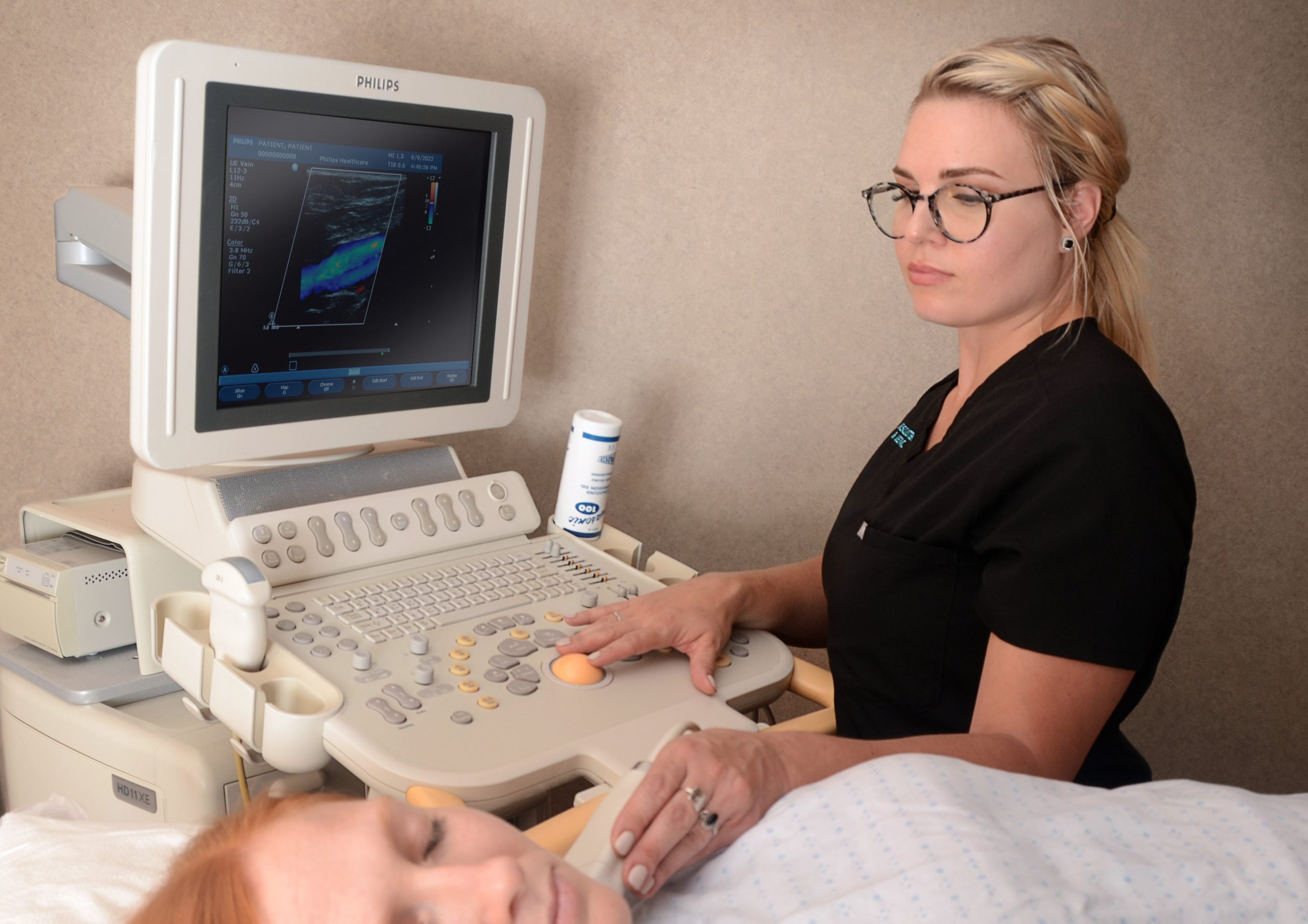
Vascular ultrasound
Vascular ultrasound in nagpur is one non-invasive medical imaging technique using high frequency sound waves, or ultrasounds, creating images of the blood vessels and helping in the detection of vascular conditions.
1. It is quite helpful in assessing blood flow and identifying vascular diseases.
2. These symptoms include blood clots, aneurysm, and stenosis.
3. Collect data on graft flow and transplant flow
Train for minimal invasive procedures, such as angioplasty and stenting
5. Determine the existence of varicose veins, and other conditions affecting the veins
This type of vascular ultrasound can provide information about blood vessels and flowing blood, including:
1. Blood flow velocity and direction
2. Diameter and wall thickness of the blood vessel
3. Blood clot or thrombus
4. Aneurysm or dilatation
5. Stenosis or narrowing
6. Occlusion
7. Tortuosity or curvature of the blood vessel
8. Volume and resistance of blood flow
9. Venous reflux or valvular incompetence
10. Arterial stiffness and compliance
All this information has diagnostic value and improves the management and also the potential of vascular diseases such as:
1. Peripheral artery disease (PAD)
2. Carotid artery disease (CAD)
3. Renal artery stenosis (RAS)
4. Mesenteric ischemia
5. Deep vein thrombosis (DVT)
6. Varicose veins
7. Aneurysms
8. Stenosis or occlusion
9. Vasculitis
10. Blood clots
Vascular ultrasound is the non-invasive imaging technology that does not involve the use of radiation. It provides a tremendous perception about vascular health and allows health professionals in making decisions about how to diagnose, treat, and manage vascular conditions.
What Is a Vascular ultrasound?
Vascular ultrasound is one form of imaging test carried out without surgical intervention in the healthcare providers. It utilizes high-frequency sound waves to produce images of blood vessels or detect vascular conditions. Sometimes, it is referred to as duplex ultrasound or Doppler ultrasound.
During a vascular ultrasound, the probe is placed against the skin at the viewed body part. The probe, or transducer sends back to itself the sound waves traveling outwards in all directions, bounces them off the blood vessels, and these waves return back to the transducer. Such signals are then converted into images shown on a monitor that can view blood vessels as well as flow in real time.
Vascular ultrasound is applied to:
– Assess blood flow and diagnose vascular diseases
– Diagnose blood clots, aneurysms, or stenosis
– Monitor grafts or transplants for blood flow
– Guide minimally invasive procedures, such as angioplasty or stenting
– Diagnose varicose veins and other venous disorders
Vascular ultrasound is often used to image the:
– Carotid arteries (neck)
– Peripheral arteries (legs and arms)
– Renal arteries (kidneys)
– Mesenteric arteries (intestinal)
– Venous system (veins)
It is an extremely useful tool for diagnosis and management of vascular diseases; its non-invasive nature makes it a favorite among the patients.
Uses of Vascular Ultrasound:
Detecting Blood Clots (Deep Vein Thrombosis – DVT): Identifies blood clots in the veins, particularly in the legs, to prevent complications like pulmonary embolism.
Aneurysm Detection: Evaluates the presence of aneurysms (abnormal bulging of arteries) in areas such as the abdominal aorta.
Arterial Blockages or Narrowing: Diagnoses conditions like Peripheral Artery Disease (PAD), which occurs when arteries in the legs become narrowed due to plaque buildup, restricting blood flow.
Carotid Artery Disease: Examines the carotid arteries in the neck to detect blockages or narrowing that could lead to stroke.
Venous Insufficiency: Detects problems with blood returning to the heart, such as in cases of varicose veins or venous reflux.
Assessing Vascular Grafts or Stents: Monitors the success of vascular surgeries, such as bypass grafts or stent placements.
Evaluating Blood Flow After Trauma: Checks for damage to blood vessels following an injury or surgery.
Dialysis Access: Assesses blood flow in the veins and arteries in patients undergoing dialysis to ensure the functionality of dialysis fistulas or grafts.
What procedures Vascular ultrasound?
Vascular ultrasound procedures include:
1. Duplex Ultrasound: In this procedure, a traditional ultrasound is combined with Doppler technology to measure blood flow.
2. Color Doppler Ultrasound: This procedure makes use of color to display blood flow and diagnose abnormalities.
3. Power Doppler Ultrasound: It is more sensitive than Color Doppler ultrasound and detects the slightest changes in blood flow.
4. Contrast-Enhanced Ultrasound: The process uses a contrast agent for proper images.
5. Carotid intima-media thickness test: measures the walls of the carotid artery and also the cardiovascular risk factor.
6. The ABI Test gives the measurement of blood pressure in the legs to diagnose peripheral artery disease (PAD).
7. Venous reflux examination: This allows an examination for the blood flow in the veins to diagnose the venous insufficiency.
8. Arterial mapping: it provides detailed imaging of the arterial blood vessels to plan surgical or interventional procedures.
9. Vein mapping: This creates detailed images of venous blood vessels in preparation for surgical or intervention planning.
10. Monitoring of vascular graft and stents: It makes use of ultrasound in tracking blood flow as well as detecting conditions that may be critical over time.
Vascular ultrasound procedures are non-invasive, pain-free, and radiation-free, thus an excellent tool for the diagnosis and management of vascular conditions.
At our Neurosys Multispeciality Center, we perform several key procedures including Craniotomy, which is primarily for the excision of brain tumors; V-P Shunt Surgery for treating hydrocephalus; surgeries for epilepsy; and operations targeting brain stem glioma. Beyond these, we offer a range of other neurosurgical services. If you have any questions that are not answere, please contact us through our Contact Us or Book your Appointment.
